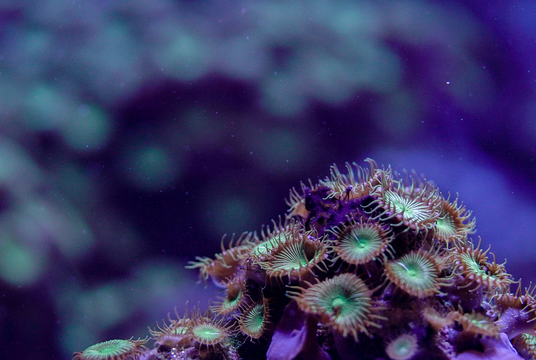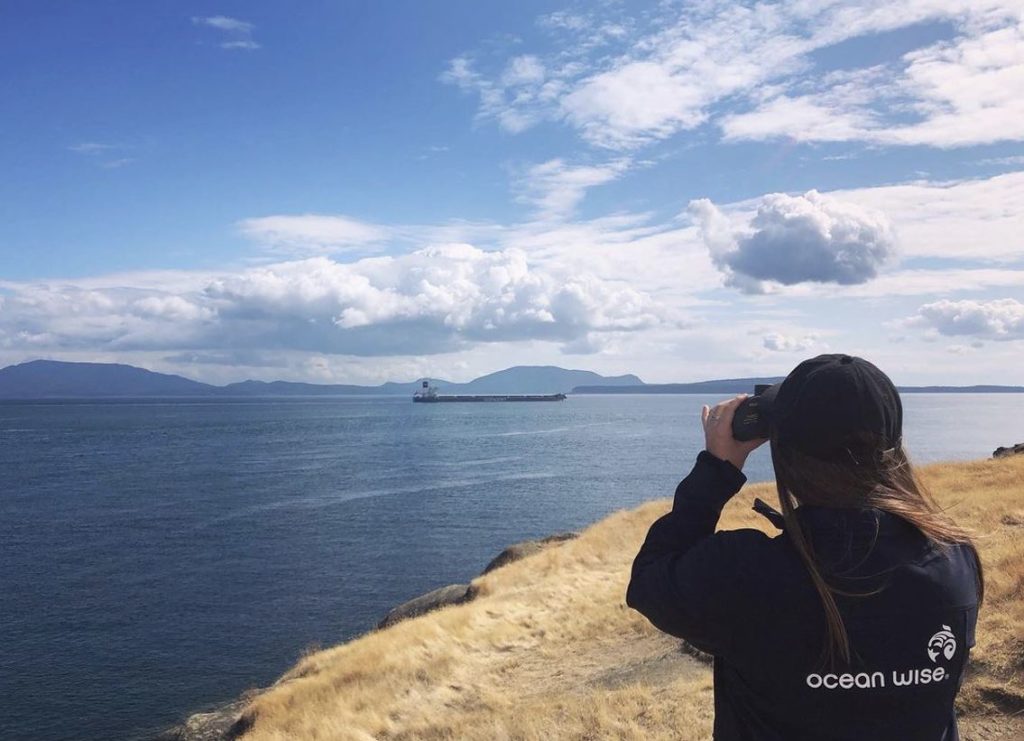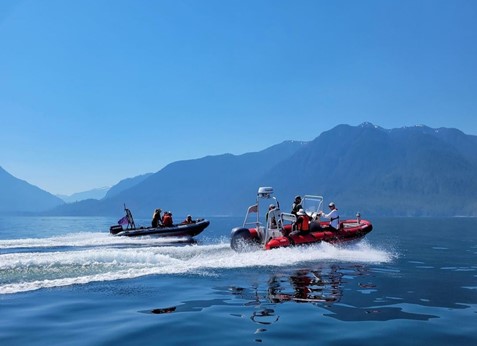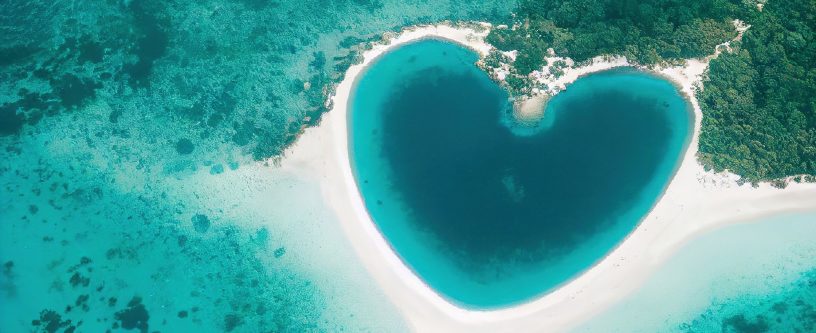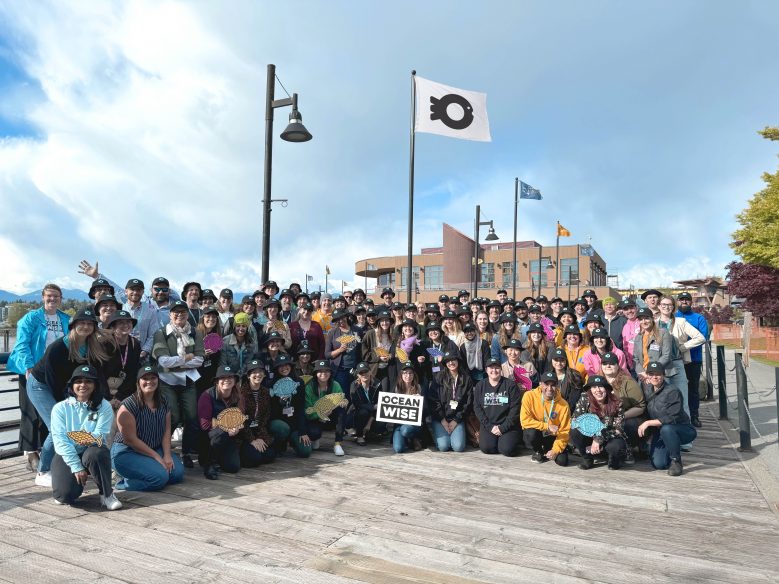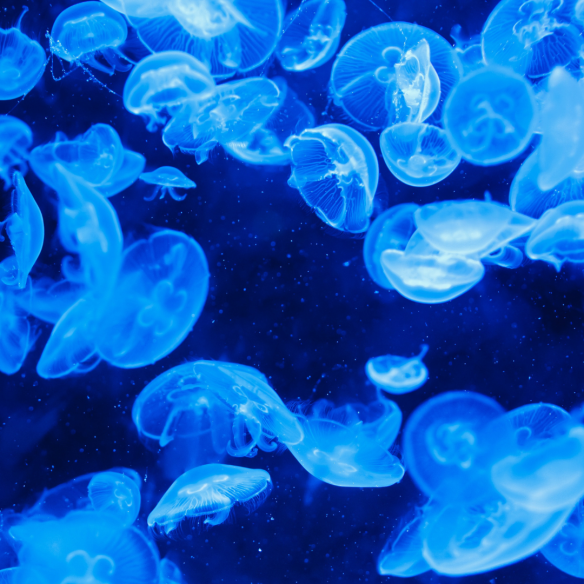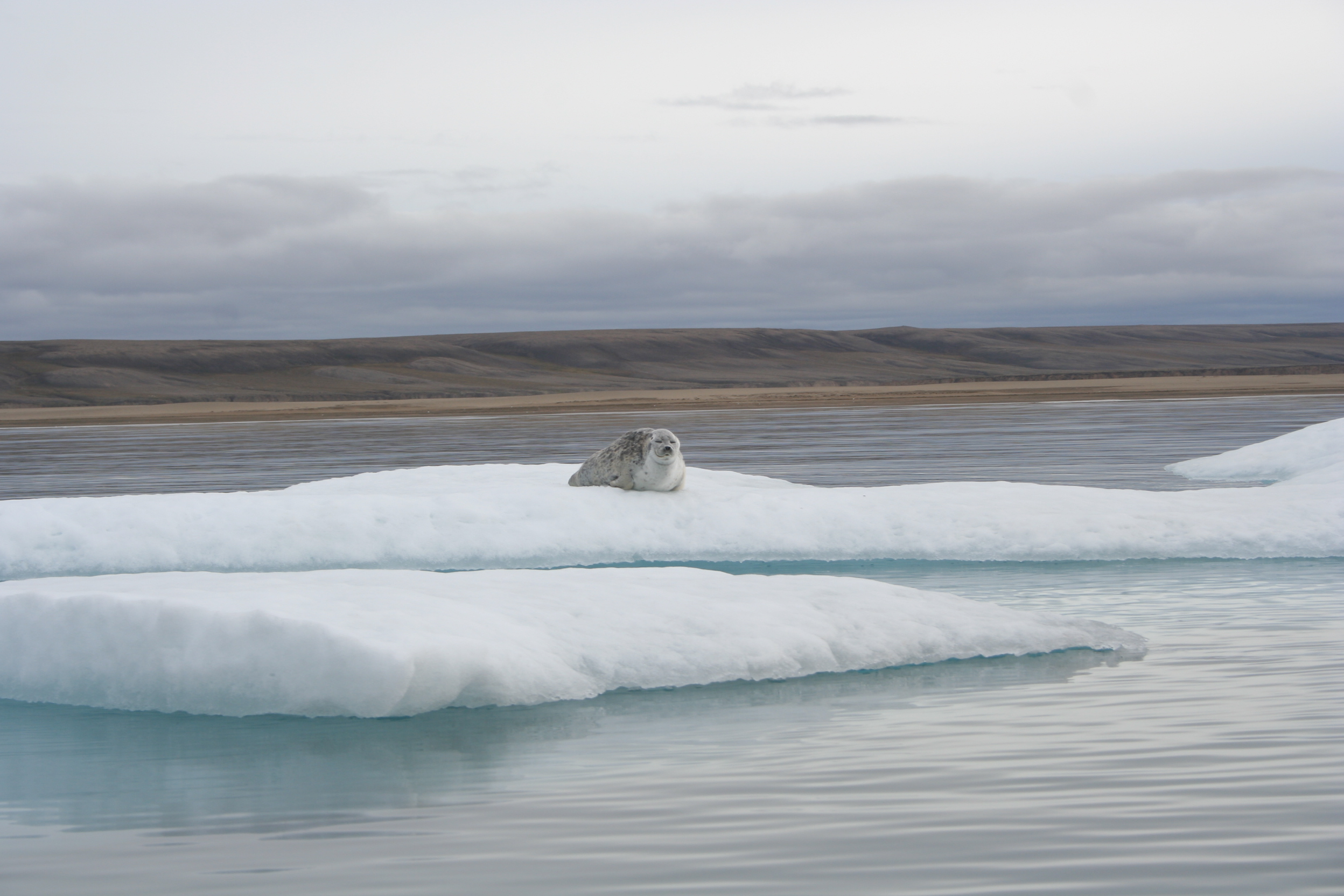
One ringed seal claw; Years of data on mercury exposure
By: Marie Noel, Research Manager, Ocean Pollution Research Program
I was lucky to spend a few summers in the Western Arctic studying beluga whales during my PhD and I have to say that the Arctic is truly a special place. It is unfortunately undergoing tremendous changes with warming happening faster than anywhere else on the planet! Over the past few decades, warming in the Arctic has been about two-to-three times greater than the global mean3 and climate projections suggest an ice-free Arctic summer by 2040.
Ringed seals are particularly vulnerable to a changing Arctic environment due to their dependence on sea ice for reproduction, molting, resting and feeding1,2. They are also likely to shift what they eat which would, in turn, affect their exposure to different contaminants including mercury. I am interested in looking at mercury levels in Arctic ringed seal claws in order to better understand the impacts of climate change on mercury exposure.

Where does mercury come from and why is it a concern?
Mercury naturally occurs in the Earth’s crust and can be released into the environment through volcanic and geothermal activities as well as natural weathering of rocks. Since the Industrial Revolution, various human activities such as coal burning, cement production, gold production and waste incineration have also contributed to the release of mercury. After mercury is released, it is carried by wind and ocean currents to locations across the entire globe, including the fragile Arctic ecosystem. Winds can transport mercury from southerly industrial regions to the Arctic in a matter of days or weeks. Mercury is then being deposited into the Arctic ecosystem through rain and snow.
In the marine environment, mercury exists in several different chemical forms that affect its distribution and toxicity. Mercury found in the marine environment can be converted by bacteria into methylmercury, its most toxic form. Methylmercury can bioaccumulate (when animals absorb and retain methylmercury that their food contains) and biomagnify (when methylmercury increases in concentration each time it moves up the food chain). These two processes result in high levels of methylmercury in long-lived marine predators such as ringed seals.
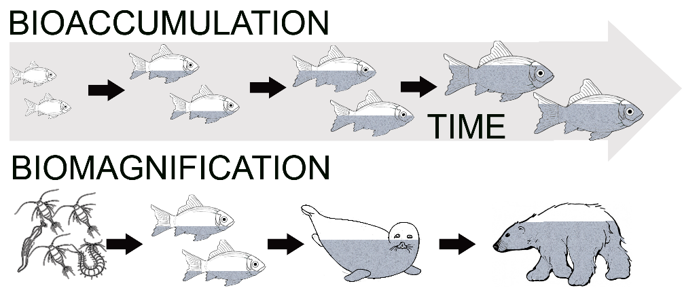
Elevated levels of mercury in marine predators can negatively[CW1] affect their brain development and the function of immune and reproductive systems4,5[CW2] . Monitoring these species for mercury levels is therefore important, more than ever, to preserve and protect the Arctic ecosystem in these rapidly changing times.
Claws and mercury – what do they have to do with each other?
Keratinized tissues such as hair, nails, whiskers, feathers or claws are ‘hard’ tissues that are very stable and, once formed, do not change their chemical composition over time. Because of this characteristic, we can gather some important clues about a ringed seal’s life by looking at their claws! Mercury circulating through ringed seal blood is incorporated in the claws as they grow and, once deposited, concentrations remain unchanged. Claws therefore trap a record of mercury exposure over time! Similar to the rings of a tree, ringed seal claws consist of alternating light and dark growth rings which can be used to look at the history of mercury exposure over several years. While the timing of deposition is not well understood, it is hypothesized that the light rings correspond to the summer period when seals are able to feed abundantly and the dark rings occur in the winter during reduced feeding and increased fasting7.

Over the past decade, I have spent quite some time looking very closely at unusual samples: from osprey feathers to harbour seal pup whiskers and grizzly bear hairs. Why? To measure mercury levels using a fairly straightforward laser technique with a very complicated name: laser ablation inductively-coupled plasma mass spectrometry (LA-ICP-MS). Basically, the laser burns the surface of the sample and the gases emitted are analyzed by mass-spectrometry giving us mercury concentrations. I am now in the process of adapting this technique to look at ringed seal claws obtained from Inuit hunters along the northern Labrador coast in collaboration with the Department of Fisheries and Oceans.
When the claws get to the lab, they need to be cleaned and cut in half to be mounted onto a glass slide. The laser, located at the University of Victoria, is then run along the entire length of the claw. Depending on the length of the claw, we can get 150 to 200 mercury data points which represent approximately two mercury data points for each month of the seal’s life! It will take some time to look at all those numbers but together with information on sea ice extent and feeding habits, we are hoping to better understand the relationship between mercury exposure and climate change. Stay tuned for some results in the coming year!
This research is being conducted in collaboration with the Department of Fisheries and Oceans Canada and is funded by the Northern Contaminants Program and ArcticNet.
References
1Ferguson et al., 2005. Climate change and ringed seal (Phoca hispida) recruitment in western Hudson Bay. Mar. Mam. Sci. 21: 121-135.
2Laidre et al., 2015. Arctic marine mammal population status, sea ice, habitat loss, and conservation recommendations for the 21st century. Conserv. Biol. 29: 724-737.
3IPCC (Intergovernmental Panel on Climate Change). 2018. Global Warming of 1.5°C.An IPCC Special Report on the impacts of global warming of 1.5°C above pre-industrial levels and related global greenhouse gas emission pathways, in the context of strengthening the global response to the threat of climate change, sustainable development, and efforts to eradicate poverty.
4Basu et al., 2009. Is dietary mercury of neurotoxicological concern to polar bears (Ursus maritimus)? Environ. Toxicol. Chem. 28: 133-40.
5Frouin et al., 2012. Mercury toxicity in beluga whale lymphocytes: limited effects of selenium protection. Aquat. Toxicol. 109: 185-93.
6Brown T.B, 2014. PCB-related health effects in ringed seals (Pusa hispida) frequenting a locally-contaminated marine environment in Labrador. PhD thesis. University of Victoria.
7Ferreira et al., 2011. Assessment of claw growth-layer groups from ringed seals (Pusa hispida) as biomonitors of inter- and intra- annual Hg, δ15N, and δ13C variation. Can. J. Zool. 89: 774-784.
Posted August 27, 2020 by Marine Mammal Research

